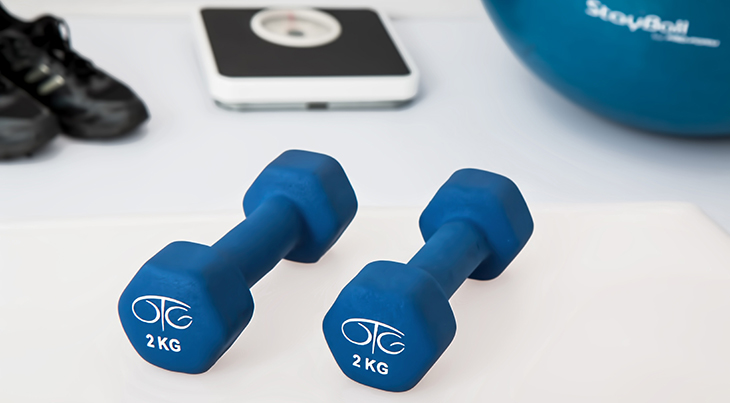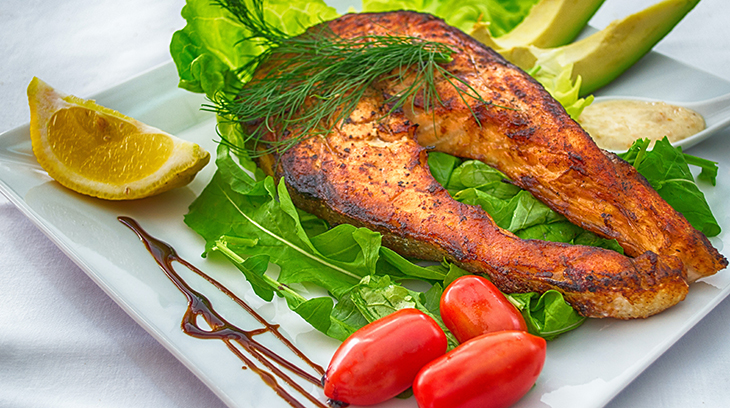6 Ways to Slow Muscle Aging & Keep the Brain Healthy
There are few things in life that we cherish as much as our health and well-being. It’s a key part of us that influences every portion of our lives. Some of us are blessed with a good star, while others try their best to manage their health issues and come out healthier.
Maintaining good health is a slow and tedious process, especially as you get older. Age influences both physical and mental health, whether we want it to or not. While we can’t stop the aging process, we can most certainly mitigate the losses that come with it.
However, this takes quite a bit of work. Overcoming health issues such as sarcopenia (age-related loss of skeletal mass and function) and decreased mental fortitude, requires constant vigilance and dedication. The body and mind are quite stubborn, so they need to be honed to remain healthy. The good news is that it’s doable with the right kind of mindset and training. Throw in a solid healthy diet to provide the right body nutrients and you have yourself a recipe for a healthy body well into old age. If you’re looking to maintain your physical and mental health, but don’t know where to start, here are six ways that you can gradually get into a perfectly healthy regime.
1. Partake in resistance training
Muscles are fickle things. Maintaining muscles is the real challenge, while building them takes minimal effort. The body will constantly try to take mass out of your muscles for other uses, even though you want to keep them strong and functional. This happens after a prolonged time without exercise, or when the exercise doesn’t include anaerobic muscle building.
Resistance training is amazing at building and maintaining muscle mass at all ages. It’s essential for reducing age-related muscle loss, as it primes the body for further muscle building. The amount of training recommended is around thirty minutes, done about three times a week. One or two resistance workouts will help any muscle group maintain mass, so long as there’s some variation involved. The body doesn’t like getting used to workouts, which is why a diverse training regime is most effective at keeping muscles occupied.
To mitigate the effects of sarcopenia, make sure you really tax your muscles with a wide variety of exercises. The workouts don’t have to last very long, but the weights and techniques involved have to exhaust muscles to their limits. This is easily achieved with resistance training, which tends to lead to exhaustion either way. While resistance training is often recommended with a rising number of sets, reps, and increasing weight, this doesn’t necessarily have to be the case. You can switch up your workout and use lower weights with higher rep numbers. Different kinds of exercises are effective and produce positive results in terms of muscle retention.
2. Increase vitamin D Levels
Vitamin D is a substance that is vital to our bodies. As you might already know, it plays a role in bone growth and strength, which translates into fewer injuries as get older. However, vitamin D isn’t just utilized in our bones. it’s also pretty important for muscle health and maintenance.
Recent studies have shown that having adequate levels of vitamin D in your body helps it produce muscle fibers. At the same time, the vitamin generally reduces inflammation in the body, which also indirectly helps muscles function and reduces their degradation. Both of these effects translate into better muscle strength and balanced muscle growth.
A lot of people don’t get as much vitamin D as they think they do. Spending time outside is a key part of vitamin D synthesis, alongside dairy and supplements. If you feel like you could utilize more vitamin D, consider safely exposing yourself to more sunlight – it’s the most natural way to produce the vitamin in your body.
One of the main issues with vitamin D concentrations in older adults and aging demographics, is that the skin becomes less and less able to produce it through sun exposure alone. This is why supplementation becomes increasingly important as we get older. Taking a supplement pill a day is recommended for those age 60+, when the skin has already lost around 75% of its vitamin D synthesis potential. It’s a small price to pay for stronger bones and muscles, though.
3. Get your heart pumping
While anaerobic exercises help build muscles, they’re not the only types of exercises that are essential for muscle maintenance. Cardio is an absolute must for keeping your heart healthy and your skeletal muscles well-fed. Disregarding all the other factors, heart health is something everyone should strive to improve. A bit of cardio here and there is easy to achieve, and it means a lot for your general physical fitness. Plus, a stronger heart means better peripheral circulation, which comes with a wide array of benefits for your body.
Cardio workouts can help maintain muscles in a few different ways. For one, better peripheral circulation allows the blood flow in the muscles to remain steady, even throughout most difficult workouts. The body’s response to insulin and insulin production also improves with more cardio training. Insulin allows the muscles to absorb glucose and create energy reserves. A better response will lead to more efficient glucose absorption, which means muscles will remain healthy and heal quicker. Plus, it doesn’t hurt to have more stamina in day-to-day life, especially as you get older.
Aim to work on your cardio around three times a week. Similarly to resistance training, thirty-minute sessions are more than enough to get your blood pumping and improve your circulation and stamina. The best part is that you don’t have to completely exhaust yourself to see the benefits of cardio. Having a brisk walk or a run for these thirty minutes would provide you with an adequate cardio workout and give you energy for the rest of your day. Biking is a good alternative for those with chronic joint pain, as this activity puts minimal pressure on your joints, while still getting the heart going. So before starting a bike ride you should visit a fully equipped bicycle shop that will have the type of bike you need for your next cardio sessions.
4. Get some healthy shut-eye
Sleep quality has deteriorated in the past few decades. All age groups are seeing reduced amounts of quality sleep for one reason or another. Some find that their jobs are too demanding of their time, which makes it difficult to balance exercise, work, and social life without sacrificing a bit of sleep. This epidemic of ineffective sleep schedules only exacerbates the deterioration of mental health and well-being. Sleep is a key part of our daily lives and it shouldn’t be neglected in favour of other responsibilities.
Research suggests that the brain uses sleep to clear out harmful byproducts from neuron groups. These toxins often include ineffective proteins such as alpha amyloids. You might also know them as the amyloids that can lead to Alzheimer’s disease. While there’s no concrete connection between sleeplessness and Alzheimer’s, it’s not a stretch to imagine that these byproducts could negatively affect brain cells in one way or another.
Improving sleep quality can be achieved with a few different measures. For one, you need to shut off all the lights. This means both natural and artificial lights need to be blocked out. Shutters, blinds, or curtains should be used to block outside light from both street lights and the sun, as natural light keeps us awake. On the other hand, you also have lots of indoor sources of light you might not have noticed. Various appliances have a single light that signals that they’re ready to start. While these kinds of lights aren’t particularly large or bright, they can interfere with sleep and leave you restless. Turn them off or unplug them before you go to sleep for best results.
At the same time, you’ll also want a soft, quality mattress that allows you to quickly drift away to sleep every night. A bad mattress can influence your back muscles and keep them cramped throughout the night. This is why many people wake up with a sore back, from sleeping on bad surfaces.
5. Provide proper nutrition for your body
There are few things as important for physical health as nutrition. Our body craves certain substances to perform its functions and to maintain various systems. When it comes to our muscles, protein is the crucial substance to watch out for. Muscles are constantly modeling and remodeling themselves, which means the flow of protein has to be constant. Whenever there’s a lack of protein in one muscle, the body breaks down other muscles to provide the sustenance it needs to. This process speeds up as we get older, leading to faster muscle degradation, especially when protein is scarce.
This is why consuming increased amounts of protein is critical for slowing down muscle aging. When you combine exercise with a healthy source of protein, the muscles aren’t broken down as quickly as they’re growing. The balance shifts in favour of increased muscle mass, which is what you want to achieve.
Whey protein its the protein of choice for most athletes, and for good reasons. It provides protein and amino acids in a very digestible and tasty form, which makes for a quick and easy meal whenever you need it. Protein provides you with the nutrition your muscles need, while also being easy on the stomach. As long as you feel comfortable consuming it before and after a workout, you’ll do it more often, leading to better results.
Along with protein, many people also consume creatine to help their workouts. Creatine is available as a non-caloric supplement that gives your muscles extra energy to utilize during a workout. It’s convenient for getting an extra rep in every one of your sets, which can mean a lot for muscle synthesis.
6. Provide the same thing for your mind
Nutrition is just as important for mental health as it is for physical health. Our brain is an organ like any other, and it needs proper nutrients to maintain cells and produce neurotransmitters. When it’s lacking in nutrients, things tend to break down and work at a slower pace as the body tries to compensate.
Leafy vegetables, fish, nuts, and olive oil are just some foodstuffs that are known to be good brain foods. They contain a wide variety of healthy unsaturated fats and vitamins that are utilized by our brains. Omega-3 acids are considered very important substance for brain development as well. These are all foods that are featured in the Mediterranean and east-Asian diets, which could explain the longevity of populations in these areas.
Coffee might seem like an unlikely contender for brain food, but it’s actually pretty good for your mind. It’s been shown to help stave off neurodegenerative diseases and maintain focus for longer periods of time. The exact mechanism of this is still unknown, but you’ll be hard-pressed to find someone who hasn’t felt the short-term focus boost of coffee.
Keep in mind, coffee has to be consumed in the right doses to be healthy and effective. Take too much and it can impact your sleep, which then makes it harmful. Around two cups of coffee are acceptable throughout the morning and afternoon. You can even drink upwards to three or four, depending on how strong you make it. Once you’ve reached the evening, it’s best to lay off the caffeine. As with all things, moderation is the key to positive effects.
Conclusion
As we get older, keeping our body and mind healthy becomes an increasingly difficult task. This shouldn’t discourage you, though. There are countless ways to improve your health with minimal changes, as long as you focus your attention on the right ones. If you want to boost your mental fortitude while also keeping your body in its prime, it’s best to start introducing these changes now. They might take time to implement, but they’re well worth the effort. Consider some of the above examples and you’ll find it a lot easier to maintain your health well into old age.
*Before making any changes to your exercise or diet, consult an expert. This article is for informational purposes only and is not intended as medical or mental health advice, nor is it a substitute for professional medical or mental health advice, diagnosis, or treatment. Always seek the advice of a qualified physician or mental health provider with any questions you may have regarding a medical or mental health condition. In the event of a medical emergency, call a doctor or 911 immediately. This website does not recommend or endorse any specific tests, physicians, products, procedures, opinions, or other information that may be mentioned on the Site or on other websites it links to. Reliance on any information provided by this website or other websites it links to, is solely at your own risk.*
**Photos are from Pexels.com**





